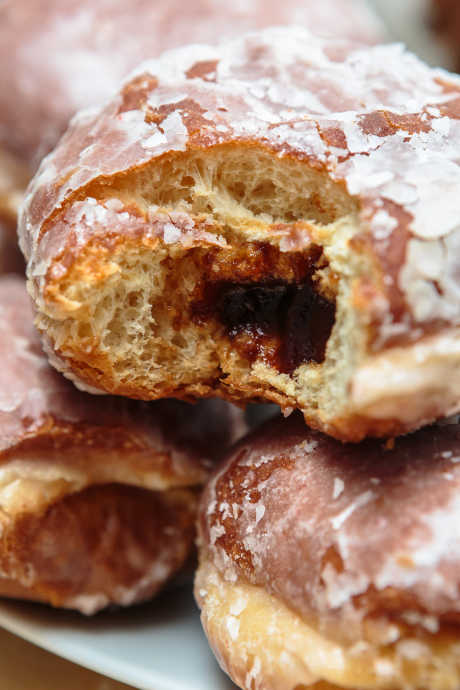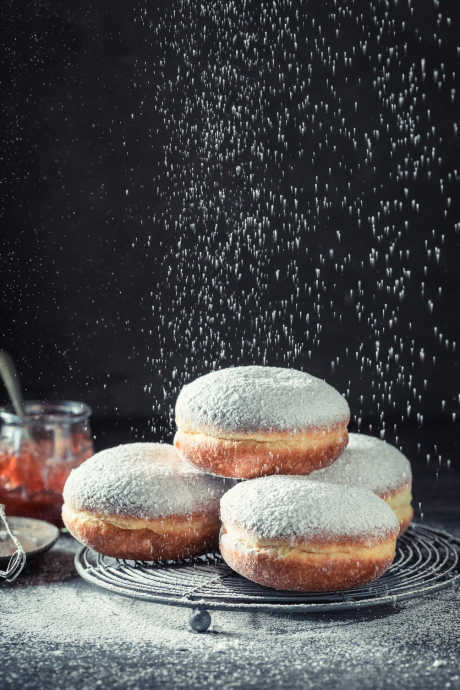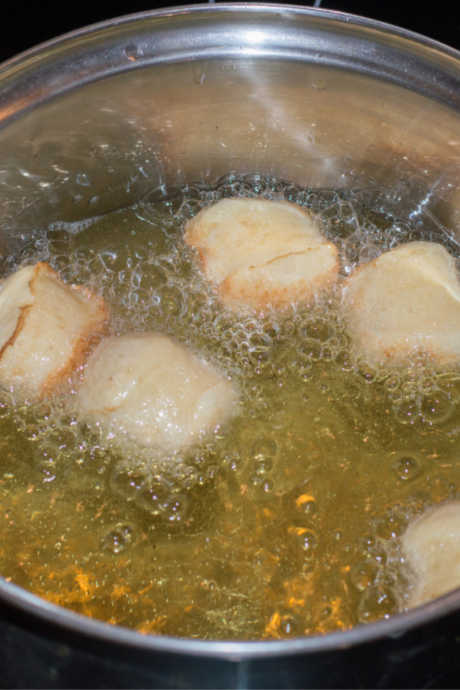Pączki: The Pre-Lent Polish Treat
Posted by Julie on Feb 21st 2020
If king cake wasn’t tempting enough for you, we’ve got another pre-Lent treat to tell you about. Pączki are deep-fried pastries that originally hail from Poland, and many of the people who wait all year for pączki in the US are of Polish heritage too. Learn more about the history of pączki, why they’re eaten before Lent, and how you can make them at home.
How to Pronounce Pączki
Before we go any further, let’s clarify how to pronounce the word pączki, so you can sound like an expert. The tail on the “a” in pączki is called an ogonek, and it’s a diacritic that indicates a nasal sound. Instead of a flat, broad “ah” sound, it has a narrow, nasal “aw” sound. In fact, you may even hear the letter “n” though it’s not overtly pronounced. “Cz” is pronounced like “ch” in English, and “ki” is “key.” So in the simplest terms, pączki is pronounced like “paunch-key.”
Want to hear actual native Polish speakers say pączki? Listen to these men and women, and practice along with them.
Also, pączki is the plural form, meaning “ little packages,” and pączek is singular. Pączek is pronounced “paun-check.”
Pączki in Poland
Pączki came about in the Middle Ages as a means of consuming eggs, butter, sugar, and lard before Lent. These ingredients were among those given up by Catholics during Lent, along with meat and other indulgences. In fact, pączki were originally stuffed with savory fillings rather than sweet jam.

Historically, both rich and poor would celebrate in the days leading up to Lent, and this time was known as the zapusty. While the rich danced at formal balls and enjoyed fine delicacies, the poor gathered to eat much more pedestrian fare and drink beer and cheap vodka. The one common item at all celebrations was pączki.
Pączki in Poland can be somewhat different from the varieties now popular in the US. Traditional Polish fillings include prune jam, rose jelly, and even fried rose buds. Pączki in Poland are rounder and smaller, and they also usually contain vodka or grain alcohol. The purpose of the alcohol is to keep the frying oil from fully penetrating the pączki dough, which keeps the finished pastries from being greasy.
Finally, pączki are eaten on the Thursday before Ash Wednesday in Poland, rather than on Shrove Tuesday (or Fat Tuesday). That day is referred to as Tlusty Czwartek, or Fat Thursday, and it starts the one-week countdown of festivities before Lent.
Pączki in the United States
Polish immigrants brought pączki to the US generations ago, which is why you’ll find them in bakeries and grocery stores across the midwest. In fact, Chicago is one of the top cities that celebrates Pączki Day, and Hamtramck, Michigan puts on a huge celebration. Instead of Fat Thursday, pączki are eaten en masse on Mardi Gras.

Pączki in the US more closely resemble traditional jelly doughnuts, with fillings such as strawberry, raspberry, lemon, and Bavarian cream. Although we no longer observe the same sort of austerity during Lent as in the Middle Ages, modern pączki are still heavy on the calories, and packed with fat and sugar. Unless you’re planning to exercise superhuman restraint during Lent, we advise you to enjoy pączki in moderation.
Make Your Own Pączki
Ready to try making pączki in your own kitchen? No matter how complicated it may seem, we have it easier than the revelers in the Middle Ages.
While this recipe from Serious Eats may not be authentic to the Polish roots of pączki, we think it’s a great place to start. It’s especially helpful if you don’t live near a bakery that churns out pączki this time of year, but you still want to taste this traditional treat.
First, dissolve yeast in warm milk, and then add a tablespoon of sugar and two cups of flour. This mixture forms the starter for your pączki. Stir the ingredients and let them sit and bubble while the yeast activates.
Next, whisk four egg yolks and one egg, plus half a cup of sugar, along with salt and vanilla. Melt the butter and let it cool before stirring it into the yeast starter. Then add the egg mixture, and combine it all in the bowl of your stand mixer.
Then use the dough hook on your mixer to slowly mix three cups of flour into the mixture. The dough will be soft and sticky. Transfer the dough to a greased mixing bowl and let it rise until it has doubled in size.
Once the dough has risen, move it to a floured surface and use biscuit cutters to cut doughnut shapes. There’s no need to roll out the dough; just punch it down. Transfer the dough circles to parchment-lined baking sheets. Cover the sheets with clean tea towels and let the dough circles rise until they have doubled in size.

It’s time to fry your pączki! Heat two inches of oil in a Dutch oven for frying. Cook pączki a few at a time on both sides, turning when they are golden brown. Allow them to cool on a wire rack.
Once your pączki are cool, use a pastry bag and tip to fill them with preserves or another filling of your choice. Dust both sides with powdered sugar and drizzle with glaze, and serve.
 Free shipping over $49
Free shipping over $49










